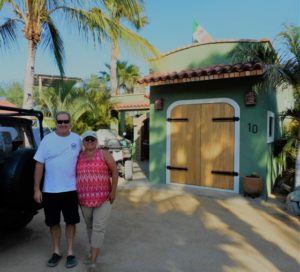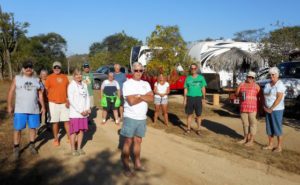
November 28, 2016 – On our last day in Loreto we hosted our Baja Fiesta dinner at the Giggling Dolphin. Even though Sunday was a holiday Ubaldo opened just for us. As usual he was a wonderful host and our group had an evening to remember. The musicians performed many fan favourites, the food was tasty and the evening just perfect. After we took a drive up the main drag to the highway and check out the xmas light decorations on the cactus and shrubs, very festive indeed.

The next day we were up early to be on the road for an 8:00 am departure. We ducked out early to see if the Propane Plant on the south side of town was open and wait for the Caravan to arrive. The gang gathered early and was determined to depart sooner than later and we did, about 7:47 am. This was a new drive for us since we eliminated Constitution from our tour. Now we were headed to Centenario and Campestre Maranatha, a significantly longer drive with a much shorter drive to Playa Tecolote, our destination for 3 days. Our first road construction was just south of Loreto beginning at the completion of the most recent road work which we call the runway (that is how wide it is) and ending at the Propane Plant, 5 km in total. This was an easy 5 km to drive.

After our 2 scheduled stops, a body break and a fuel stop in Ciudad Insurgentes, the next road construction we encountered was at about KM 200 south of Palapa 206. This was approximately 7 km in length and ok to drive, lots of dust as you may expect. When complete this will link 2 sections of previously rebuilt road and provide a stretch of approximately 25 km of good wide new pavement out south of Ciudad Constitucion. Our 3rd stop of the day was a lunch stop in Las Pocitas, this was a well deserved break after a fair bit of traffic. Finally we came upon our 3rd and last hwy construction rebuild at KM 56 (56 km from La Paz) which was 14 km in length. This was not such an easy drive, much of it we did a 10km per hour or less. Our Happy Hour was very happy to have stopped driving.

The next morning we were off to Playa Tecolote but first a stop at Walmart to resupply. We learned that Liquor of any kind could not be purchased until 9:00 am, so the shopping took a bit longer than usual. One more stop at the PEMEX than our final leg to the beach. It was windy when we arrived and over the next 3 days did slowly dropped down, however it picked back up the day we left. Lots of beach walking, some swimming and just hanging out. There was other RVs on the beach, some Canadians and Americans, others from across the pond. The couple we met at Loreto joined us on our last day. Our Pot Luck dinner included a wonderful Sunset, a real treat. Without the breeze our stay would have been uncomfortable, although it is too bad we did not see clam seas for just one day.

After 3 days we headed off to Rancho Verde, but first our stop at El Triunfo and the Caffé El Triunfo operated by Marcos Spahr, a terrific Baker. On our way we were passed by a Baja Sunrise RV pickup truck, who seemed excited to see us. Every time we arrive at El Triunfo they have opened another attraction, added a new shop or restored another derelict building. The transformation of this place is amazing. Mark had our reservations which was good because Audi was arriving with almost 70 people. The gang enjoyed the Brunch and a look around town, the Audi promotion was something to see; 44 2017 Audis all in this small village. After brunch we headed another 20km to our final destination, Rancho Verde. There was a couple of other campers already in the campground but lots of room for us. Hermina mentioned that the Baja Sunrise truck dropped in to tell us they had no room at his campground (wow really?), as it turned out he told her they were not ready for arrival until the next day. How she was confused we are not sure as they are both Mexicans speaking Spanish. The Wi-Fi worked for a while which is normal but afterwards very hit and miss. We played a little Mexican Train with Dave & Deanna before retiring for the evening. No one complained about the cool evening, bright stars, no wind, quiet surrounding and excellent sleep.
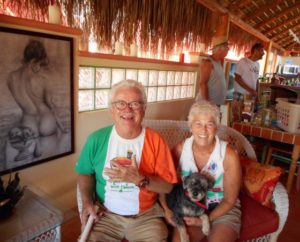
The gang was eager to get going the following day and our destination was Los Barriles and the Baja Sunrise RV Park. We dropped everyone at the PEMEX to scout out the layout, the entrance and just what was happening t our new campground. Turns out everything was perfect and Jorge Bremer, owner/manager was ready for our arrival. We did our introductions, met Jorge Jr and his wife and headed back to pick up the group. This campground had closed in 2007 and reopened in December of 2015. They have done a great job bringing it back, making significant improvements and building for the future. On our return in January the showers will be finished and the laundry operational. We made arrangements to wash the RVs and enquiries about fishing. Our friends Barry & Viv (Season 3) showed up on their quad and returned later with their jeep to give us a tour of the town which we have not seen for 5 years. We dropped in to see their Casita at the East Cape RV Resort, very nice, and then we were off to have a good look around. This included a stop for Nachos at the El Gecko Restaurant and Beach Club, definitely a good pick. On our return we introduced them to our group. Barry and Viv have been instrumental in assisting us with finding a new RV Park since we were notified in September about Villa Serena closing and our subsequent move to Los Barriles. Later in the evening we met with Octavio Aviles Cota, owner of Turis Pancho, a transport company (again Barry & Viv recommended we talk to Octavio). We have Wagon Masters without vans and do need transport for various excursions.
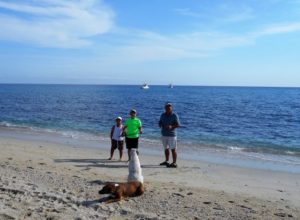
Day 2 in Los Barriles was also busy. At 10 am we headed out on an excursion into town only a 5 minute drive away. We did a drive thru of Martin Verdugo’s RV Park, folks thought was too confining with no view of the water. Next was the East Cape RV Resort and a visit with Barry & Viv. This is a beautiful park well developed park with two (2) spaces. The gang really liked how Barry & Viv put their Casita together and we also got to see what Jim & Vicky (former Baja Amigos who went with Dom & Diane 2 years ago) had built. Next we headed out to the Playa Norte RV Park next to 2nd arroyo north of town. Folks were not impressed for sure; too far away and remote with little view, also expensive. We drove up the bluff for a view and photo op and a look at some fancy houses then headed back into town and a stop at the grocery store. Later we hosted Happy Hour at Paul & Sonya’s as they were hosting the Grey Cup game. Gerry & Helen who we met in Loreto arrived at the RV Park so we invited them to join us. Between Lisa and Sonya there was plenty of food to go around, we did not go short on libations either. What a game, it looked like Calgary was out of it early, then came back in the 4th quarter to tie the came and send it into overtime. In the end Ottawa won 39 – 33, and all said they did deserve to win.
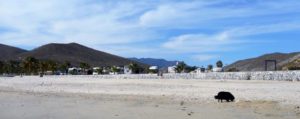
This morning Dave, David, Paul and Chuck are heading out for a day of fishing. We will have a short drive into town before lunch and we are headed out for dinner at El Gecko on the beach in the early evening with the gang, we have asked Barry & Viv to join us. Tomorrow we depart south and a busy travel day with many stops before we reach our destination, the Los Cerritos Surf Colony & RV Park south of Pescadero, BCS.
The Baja journey continues.
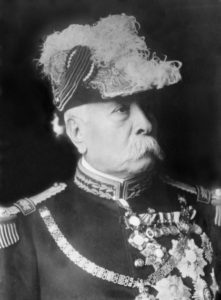
Did you know? Part 2
Porfirio Díaz and the Catholic Church
Díaz came from a devoutly Catholic family; his uncle, José Agustín, was bishop of Oaxaca. Díaz had trained for the priesthood, and it seemed likely that was his career path. Oaxaca was a center of liberalism, and the founding of the Institute of Arts and Sciences, a secular institution, helped foster professional training for Oaxacan liberals, including Benito Juárez and yes, Porfirio Díaz. Díaz was also a Freemason, which did not necessarily put him at odds with the Catholic Church, but did give him access to a secret brotherhood of like-minded ambitious men. Radical liberalism was anti-clerical, seeing the privileges of the Church as challenging the idea of equality before the law and individual, rather than corporate identity. The economic power of the Church was considered a detriment to modernization and development. The Church as a major corporate landowner and de facto banking institution shaped investments to conservative landed estates more than industry, infrastructure building, or exports. When Díaz abandoned his ecclesiastical career for one in the military, his powerful uncle disowned him.

Unlike many doctrinaire liberals, Díaz was not virulently anti-clerical. However, powerful liberals following the ouster of Santa Anna had moved to implement legal measures to curtail the power of the Church. The Juárez Law abolished special privileges (fueros) of ecclesiastics and the military, and the Lerdo Law mandated disentailment of the property of corporations, specifically the Church and indigenous communities. The liberal constitution of 1857 removed the privileged position of the Catholic Church and opened the way to religious toleration, considering religious expression as freedom of speech. However, Catholic priests were ineligible for elective office, but could vote. Conservatives fought back in the War of the Reform, under the banner of religión y fueros (that is, Catholicism and special privileges of corporate groups), but they were defeated in 1861. Conservatives unsuccessfully tried again with the French Intervention (1862–67) to reinstate the dominance of the Church.
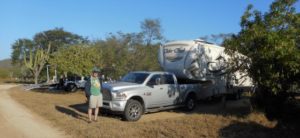
Following the fall of the Second Empire in 1867, liberal presidents Benito Juárez and his successor Sebastián Lerdo de Tejada began implementing the anti-clerical measures of the constitution. Lerdo went further, extending the laws of the Reform to formalize: separation of Church and State; civil marriage as the only valid manner for State recognition; prohibitions of religious corporations to acquire real estate; elimination from legal oaths any religious element, but only a declaration to tell the truth; and the elimination of monastic vows as legally binding. Further prohibitions on the Church in 1874 included: the exclusion of religion in public institutions; restriction of religious acts to church precincts; banning of religious garb in public except within churches; and prohibition of the ringing of church bells except to summon parishioners.
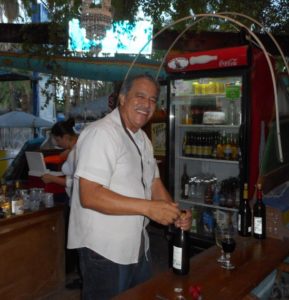
Díaz was a political pragmatist and not an ideologue, likely seeing that the religious question re-opened political discord in Mexico. When he rebelled against Lerdo, Díaz had at least the tacit and perhaps even the explicit support of the Church. When he came to power in 1877, Díaz left the anti-clerical laws in place, but no longer enforced them as state policy, leaving that to individual Mexican states. This led to the re-emergence of the Church in many areas, but in others a less full role. The Church flouted the Reform prohibitions against wearing clerical garb, there were open-air processions and Masses, and religious orders existed. The Church also recovered its property, sometimes through intermediaries, and tithes were again collected. The Church regained its role in education, with the complicity of the Díaz regime which did not put money into public education. The Church also regained its role in running charitable institutions. Despite an increasingly visible role of the Catholic Church during the Porfiriato, the Vatican was unsuccessful in getting the reinstatement of a formal relationship between the papacy and Mexico, and the constitutional limitations of the Church as an institution remained the law of the land.
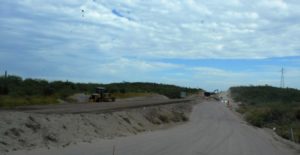
In Díaz’s personal life, clearly religion still mattered and that fierce anti-clericalism could have a high price. In 1870, his brother Félix, a fellow liberal, who was then governor of Oaxaca, had rigorously applied the anti-clerical laws of the Reform. In the rebellious and supposedly idolatrous town of Juchitán in Tehuantepec, Félix Díaz had “roped the image of the patron saint of Juchitán to his horse and dragged it away, returning the saint days later with its feet cut off”. When Félix Díaz had to flee Oaxaca City in 1871 following Porfirio’s failed coup against Juárez, Félix ended up in Juchitán, where the villagers killed him, doing to his body even worse than he did to their saint. Having lost a brother to the fury of religious peasants, Díaz had a cautionary tale about the dangers of enforcing anti-clericalism. Even so, it is clear that Díaz wanted to remain in good standing with the Church. In 1879, when his wife died in childbirth, he wrote a private letter to Church officials renouncing the Laws of the Reform, which allowed his wife to be buried with Catholic rites on sacred ground. When Díaz remarried in 1881, to Carmen Romero Rubio, the 17-year-old daughter of one of his advisors, Oaxaca cleric Father Eulogio Gillow gave his blessing. Gillow was later appointed archbishop of Oaxaca. Doña Carmen is credited with bringing Díaz into closer reconciliation with the Church, but Díaz was already inclined in that direction.

This modus vivendi between Díaz and the Church had pragmatic and positive consequences. Díaz did not publicly renounce liberal anti-clericalism, meaning that the Constitution of 1857 remained in place, but neither did he enforce its anti-clerical measures. Conflict could reignite, but it was to the advantage of both Church and the Díaz government for this arrangement to continue. If the Church did counter Díaz, he had the constitutional means to rein in its power. The Church regained considerable economic power, with conservative intermediaries holding lands for it. The Church remained important in education and charitable institutions. Other important symbols of the normalization of religion in late 19th century Mexico included: the return of the Jesuits (expelled by the Bourbon monarchy in 1767); the crowning of the Virgin of Guadalupe as “Queen of Mexico”; and the support of Mexican bishops for Díaz’s work as peacemaker. Not surprisingly, when the Mexican Revolution broke out in 1910, the Catholic Church was a staunch supporter of Díaz.

Economic development under Díaz
Some say it was the golden age of Mexican economics, 3.2 US Dollars per Mexican Peso. Mexico was compared economically to economic powers of the time such as France, Great Britain, and Germany. For some Mexicans, there was no money and the doors were thrown open to those who had. Also, economic progress varied drastically from region to region. The north was defined by mining and ranching while the central valley became the home of large-scale farms for wheat and grain and large industrial centers.
The Juárez Theatre
One component of economic growth involved stimulating foreign investment in the Mexican mining sector. Through tax waivers and other incentives, investment and growth were effectively realized. The desolate region of Baja California Sur benefited from the establishment of an economic zone with the founding of the town of Santa Rosalía and the commercial development of the El Boleo copper mine. This came about when Díaz granted a French mining company a 70-year tax waiver in return for its substantial investment in the project. In a similar fashion, the city of Guanajuato realized substantial foreign investment in local silver mining ventures. The city subsequently experienced a period of prosperity, symbolized by the construction of numerous landmark buildings, most notably, the magnificent Juárez Theatre.
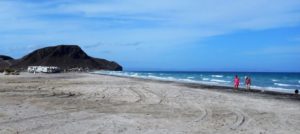
Because Díaz had created such an effective centralized government, he was able to concentrate decision-making and maintain control over the economic instability. This instability arose largely as a result of the dispossession of hundreds of thousands of peasants of their land. Communal indigenous landholdings were privatized, subdivided, and sold. The Porfiriato thus generated a stark contrast between rapid economic growth and sudden, severe impoverishment of the rural masses, a situation that was to explode in the Mexican revolution of 1910.

Collapse of the Diaz regime
On 17 February 1908, in an interview with the U.S. journalist James Creelman of Pearson’s Magazine, Díaz stated that Mexico was ready for democracy and elections and that he would retire and allow other candidates to compete for the presidency. Without hesitation, several opposition and pro-government groups united to find suitable candidates who would represent them in the upcoming presidential elections. Many liberals formed clubs supporting the governor of Nuevo León, Bernardo Reyes, as a candidate for the presidency. Despite the fact that Reyes never formally announced his candidacy, Díaz continued to perceive him as a threat and sent him on a mission to Europe, so that he was not in the country for the elections.
“I have no desire to continue in the Presidency. This nation is ready for her ultimate life of freedom.” said Diaz. “Since I am responsible for bringing several billion dollars in foreign investments into my country, I think I should continue in my position until a competent successor is found.” Diaz continued.
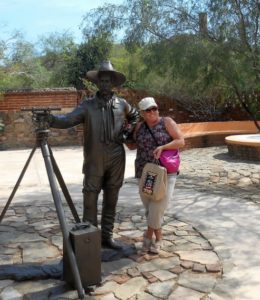
In 1909, Díaz and William Taft, the then president of the United States, planned a summit in El Paso, Texas, and Ciudad Juárez, Mexico, a historic first meeting between a U.S. president and a Mexican president and also the first time an American president would cross the border into Mexico. Díaz requested the meeting to show U.S. support for his planned eighth run as president, and Taft agreed to support Díaz in order to protect the several billion dollars of American capital then invested in Mexico. Both sides agreed that the disputed Chamizal strip connecting El Paso to Ciudad Juárez would be considered neutral territory with no flags present during the summit, but the meeting focused attention on this territory and resulted in assassination threats and other serious security concerns. The Texas Rangers, 4,000 U.S. and Mexican troops, U.S. Secret Service agents, FBI agents and U.S. marshals were all called in to provide security. An additional 250 private security detail led by Frederick Russell Burnham, the celebrated scout, were hired by John Hays Hammond, a close friend of Taft from Yale and a former candidate for U.S. Vice-President in 1908 who, along with his business partner Burnham, held considerable mining interests in Mexico. On October 16, the day of the summit, Burnham and Private C.R. Moore, a Texas Ranger, discovered a man holding a concealed palm pistol standing at the El Paso Chamber of Commerce building along the procession route. Burnham and Moore captured and disarmed the assassin within only a few feet of Díaz and Taft.
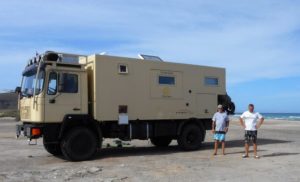
As groups began to settle on their presidential candidate, Díaz decided that he was not going to retire but rather allow Francisco Madero, an aristocratic but democratically leaning reformer, to run against him. Although Madero, a landowner, was very similar to Díaz in his ideology, he hoped for other elites in Mexico to rule alongside the president. Ultimately, however, Díaz did not approve of Madero and had him jailed during the election in 1910. Despite what he had formerly said about democracy and change, sameness seemed to be the only reality.
Despite this, the election went ahead. Madero had gathered much popular support, but when the government announced the official results, Díaz was proclaimed to have been re-elected almost unanimously, with Madero gathering only a minuscule number of votes.
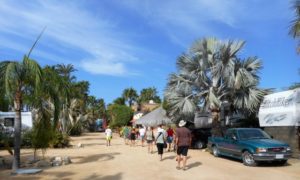
This case of massive electoral fraud aroused widespread anger throughout the Mexican citizenry. Madero called for revolt against Díaz, and the Mexican Revolution began. Díaz was forced from office and fled the country for Spain on May 31, 1911. On 2 July 1915, Díaz died in exile in Paris. He is buried there in the Cimetière du Montparnasse (where Jean-Paul Sartre and Simone de Beauvoir are also buried). He was survived by his second wife (María del Carmen Romero-Rubio Castelló, 1864–1944) and two of his children (Deodato Lucas Porfirio Díaz Ortega, 1873–1946, and Luz Aurora Victoria Díaz Ortega, 1875–1965). His other five children died as infants. His widow was allowed to return to Mexico in the 1940s under the presidency of Manuel Ávila Camacho. In 1938, the 430-piece collection of arms of the late General Porfirio Díaz was donated to the Royal Military College of Canada in Kingston, Ontario.
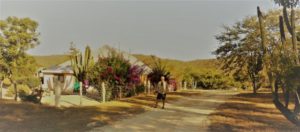
Diaz Legacy
The legacy of Díaz has undergone revision since the 1990s. In Díaz’s lifetime before his ouster, there was an adulatory literature, which has been named “Porfirismo”. The vast literature that characterizes him as a ruthless tyrant and dictator has its origins in the late period of Díaz’s rule and has continued to shape Díaz’s historical image. In recent years, however, Díaz’s legacy has been re-evaluated by Mexican historians, most prominently by Enrique Krauze, in what has been termed “Neo-Porfirismo”. As Mexico pursued a neoliberal path under President Carlos Salinas de Gortari, the modernizing policies of Díaz that opened Mexico up to foreign investment fit with the new pragmatism of the Institutional Revolutionary Party. Díaz was characterized as a far more benign figure for these revisionists. With the wave of anti-Americanism in 2003, the following words of Diaz were recalled: “Poor Mexico, so far from God, so close to the United States.”
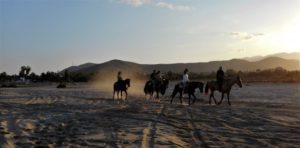
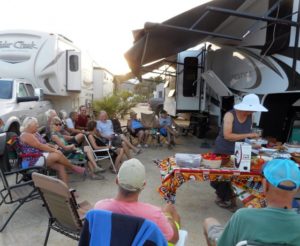
Attempts to Return Remains to Mexico
There have been several attempts to bring back to Mexico the remains of Don Porfirio Díaz, since the 1920s to the 1980s. The most recent movement started in 2014 in Oaxaca by the Comisión Especial de los Festejos del Centenario Luctuoso de don Porfirio Díaz Mori, which is headed by Francisco Jiménez. According to some, the fact that Díaz’s remains have not been returned to Mexico “symbolises the failure of the post-Revolutionary state to come to terms with the legacy of the Díaz regime.”
List of notable foreign orders awarded to President Díaz:
Austria-Hungary
Grand Cross of the Royal Hungarian Order of St. Stephen
Belgium
Grand Cordon of the Order of Leopold
Qing Dynasty (China)
First Class Condecoration of the Imperial Order of the Double Dragon
France
Napoleon I’s Austerlitz sword
Grand Cross of the Legion of Honour
Kingdom of Italy
Knight of the Grand Cross of the Order of Saints Maurice and Lazarus
Empire of Japan
Grand Cordon of the Order of the Chrysanthemum
Netherlands
Knight Grand Cross of the Order of the Netherlands Lion
Qajar Dynasty (Persia)
First Class Condecoration with Grand Cordon of the Order of the Lion and the Sun
Kingdom of Prussia
Grand Cross of the Order of the Red Eagle
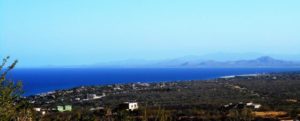
Kingdom of Portugal
Grand Cross of the Order of the Tower and Sword
Russian Empire
Star of the Imperial Order of St. Alexander Nevsky
Spain
Grand Cross of the Order of Isabella the Catholic
Grand Cross of the Order of Military Merit
Sweden
Knight of the Order of the Sword
United Kingdom
Knight Grand Cross of the Most Honourable Order of the Bath
Venezuela
First Class of the Order of the Liberator
Kingdom of Hawaii
Grand Cross of the Royal Order of Kalākaua I
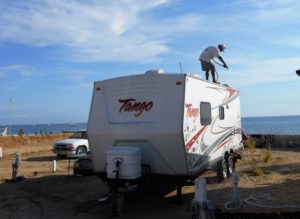
Porfirio Díaz – Cinco de Mayo connection
The main Mexican holiday is the Day of Independence, celebrated on September 16. Americans and Canadians are more familiar with the Cinco de Mayo. Cinco de Mayo commemorates the date of the Battle of Puebla, in which Díaz participated, when a major victory was won against the French. Under the Porfiriato, the Mexican Consuls in the United States gave Cinco de Mayo more importance than the Day of Independence due to the President’s personal involvement in the events. It is still widely celebrated in the United States, although largely due to cultural permeation.
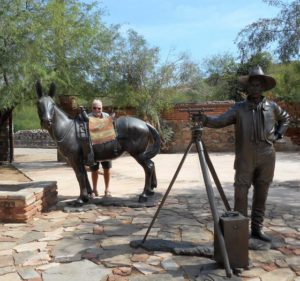
Porfirio Díaz remembered
1. The film The Kaiser, the Beast of Berlin (1918) has Díaz played by Pedro Sose
2. The film The Mad Empress (1939) has Díaz played by Earl Gunn
3. The film Juarez (1939) has Díaz played by John Garfield
4. The film Porfirio Díaz (1944) is a biopic of his life
5. The film My Memories of Mexico (1944) has Díaz played by Antonio R. Frausto
6. The film Sobre las olas (1950) has Díaz by Antonio R. Frausto
7. The film Viva Zapata! (1952) has Díaz by Fay Roope
8. The film Terra em Transe (1967) uses the character metaphorically. It is interpreted by the Brazilian actor Paulo Autran and the character is portrayed as a conservative president supported by revolutionary forces.
9. The Mexican soap opera La Constitución (1970) has Díaz played by Miguel Manzano
10. The Mexican soap opera El Carruaje (1972) has Díaz played by Salvador Sánchez
11. Porfirio Díaz is one of the main characters of the Mexican soap opera El Vuelo del Águila (1994) with Humberto Zurita as the young Díaz and Manuel Ojeda playing Díaz as President and Fabián Robles as a child
12. The film Zapata – El sueño del héroe (2004) has Díaz played by Justo Martínez
13. Post-hardcore punk band At the Drive-In has a track titled “Porfirio Díaz” on their 1996 debut album Acrobatic Tenement
14. The novel All the Pretty Horses (1992) by Cormac McCarthy. Alejandra’s aunt is a childhood friend of Francisco Madero. The revolution is mentioned in a monologue.
15. The James Carlos Blake novels The Friends of Pancho Villa (1996), in which Díaz is a major character, and Country of the Bad Wolfes (2012), in which Díaz is a central character.
16. Porfirio Díaz is referenced in chapter two of D.H. Lawrence’s seminal Studies in Classical American Literature (1923), with respect to the “perfectibility of man.”

In my opinion Porfirio Diaz was a Mexican hero who began his reign with good intentions and succumbed to the adage “Absolute power corrupts absolutely”. As many leaders who evolve into dictators, he overstayed his welcome. Fortunately for Diaz he fled the country to live his remaining years in exile; most dictators never do.
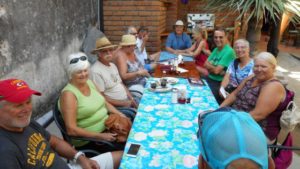
Notwithstanding the eventual corruption, looting of the public purse and ruling with an iron fist. He did manage to bring political stability to Mexico and economic growth never seen before for 35 years. When was the last time the Peso was valued at $3.20 US?
